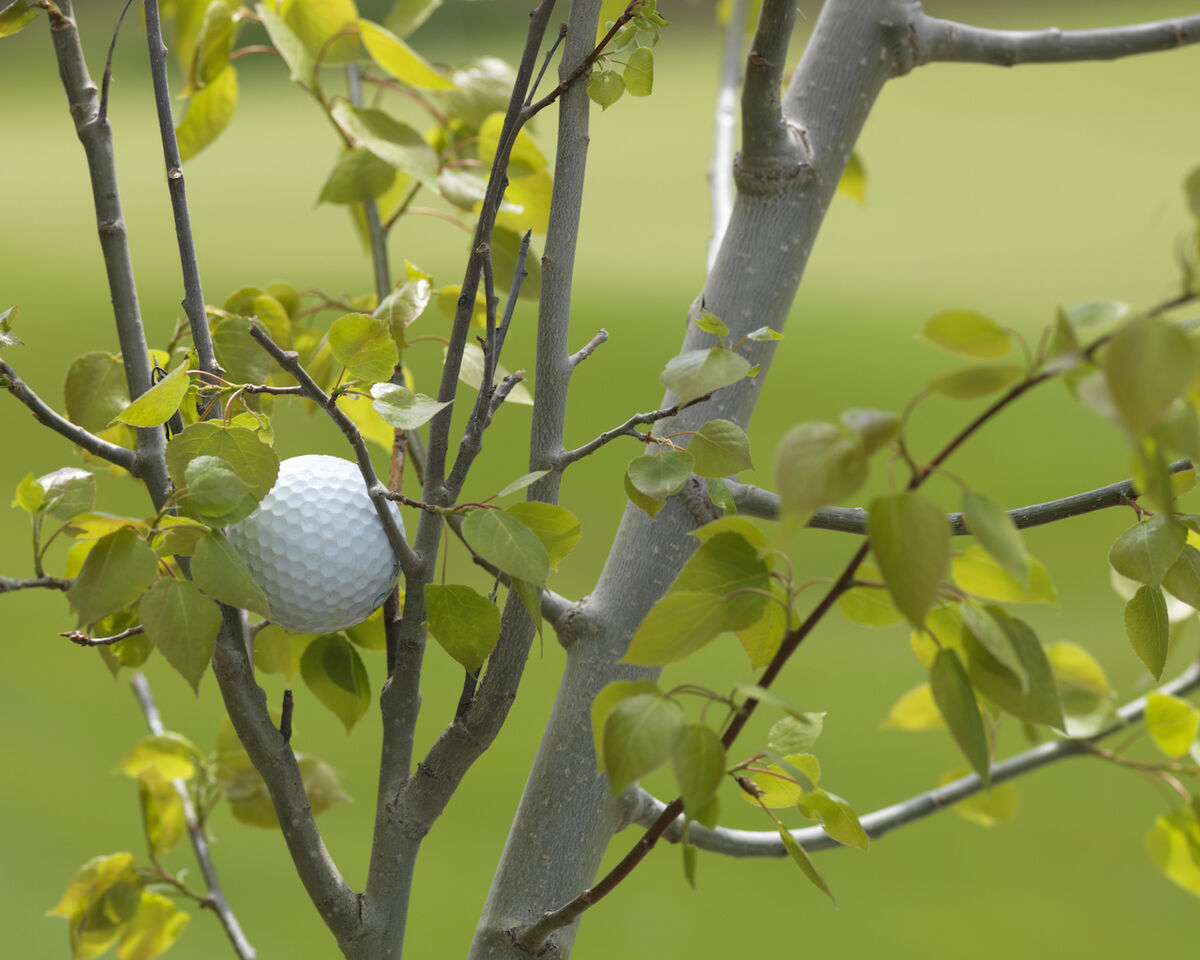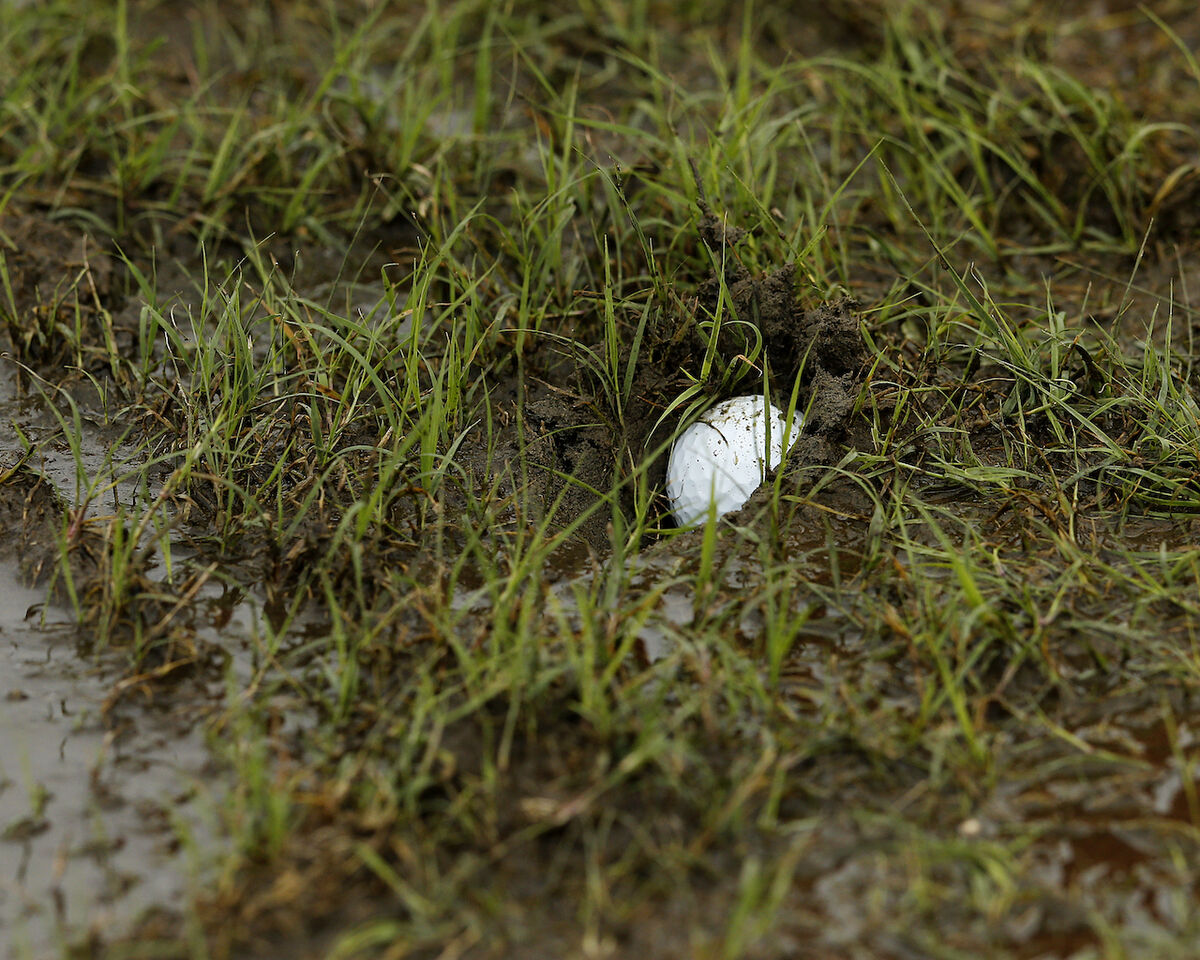The Official "Play It As It Lies" Golf Rule (And Exceptions)

The Rules of Golf are confusing, and the rule often referred to as the "play it as it lies" rule is not as straightforward as it sounds.
In general, a golf ball should be played where it lands without any change to the overall situation. In the United States Golf Association's Rules of Golf, Rule No. 9 is the "Ball Played as It Lies; Ball at Rest Lifted or Moved" Rule. This rule prohibits improving the lie, the area intended for making a swing, the line of play or the area in which the ball is to be dropped or placed. If you break this Rule, you are considered to have played from the Wrong Place, a breach that comes with a two-stroke penalty (the General Penalty).
Improving the Situation
Rule 8.1 of the Rules of Golf addresses improving the situation in which a golf ball has come to rest. The rule prohibits "moving, bending or breaking anything growing or fixed," moving or pressing down the surface on which the ball lies, making or removing "irregularities" on the playing surface, or moving any form of water (including dew or frost).
In other words, you can't snap a pesky branch that impedes your backswing or stomp down some inconvenient turf in the line of your swing.
The Rules of Golf would be no fun without a handful of exceptions, so let's take a look at some of the exceptions to the play-the-ball-as-it-lies Rule, including exceptions for embeded balls, stance, a ball that moves during your swing, and balls on the putting green.
Exception: Embedded Ball

If your ball is embedded in its own pitch mark in the fairway or rough, don't worry, you get free relief. If you want to get technical, your ball is legally embedded when part of it is below ground level. If you are unsure if your ball is embedded, you are allowed to mark its location and inspect the ground, but if it is deemed not to be embedded, you must replace it without cleaning the ball.
If your ball is embedded, you can clean it and drop it within one club-length, no nearer to the hole.
Exception: Stance
If you find your ball in a place where you cannot stand on playable ground -- such as if your stance would be on a cart path or sprinkler head -- you may move your ball one club length from the nearest point of complete relief, but not closer to the hole.
Exception: Backswing
If you inadvertently move your ball while making your stroke or on your backswing, this is not considered improving your lie. The exception reads: "in making a stroke or the backward movement of (the) club for a stroke," as long as the stroke is made.
However, if you cause your ball at rest to move when you're not making a stroke, there's a good chance you get dinged with a one stroke penalty, unless you meet one of those exceptions.
Exception: On the Tee
On the tee box -- when beginning a hole -- a player may improve the ground on which the ball is teed. For example, you may place the ball on a tee anywhere in the teeing area and you may remove weeds, press down the grass around the tee or wipe away loose impediments. In addition, if the ball falls off the tee at or before address, even if you inadvertently caused it to fall off, you may re-tee without penalty.
Exception: On the Green
The Rules of the putting green allow you may mark your ball and replace it at the spot where it landed. You may also repair the green in the line of your putt or remove any sand, dirt or other loose impediments.
Penalty Area
If your ball lands in a penalty area you always have the option of taking relief outside of the penalty area, which costs you one penalty stroke. You also have the option to play it as it lies.
When you choose the latter and play from inside a penalty area, there are a few parameters. First, you don't get relief from any abnormal course conditions, like a sprinker head. You also cannot deem your ball to be unplayable.
The good news, however, is that you can remove loose impedements and movable obstructions, brush the ground with your practice swings, and even ground your club.
The Happy Gilmore Dilemma
The classic 1996 golf film, Happy Gilmore, has its share of iconic scenes. The play-the-ball-as-it-lies rule comes up twice in the film. Shooter McGavin and Happy each experience one of the most unbelievable lies ever seen.
- Shooter's ball goes long on a par 3 and comes to rest on Mr. Larson's foot. Shooter is told that the rule is to play it as it lies, so he takes a wedge off of Mr. Larson's foot and puts his ball near the hole.
- Happy has to play after a television tower crashed down onto the 18th green just as he's about to attempt his victory-clinching putt. He too plays the ball as it lies and banks his golf ball around a Mouse Trap-like obstacle course and ultimately lands in the bottom of the cup.
However, both players could have gotten relief. Both Mr. Larson's foot and the television tower should have been deemed outside obstructions, allowing relief. Each player could have taken a free drop at the closest point of complete relief, no closer to the hole.